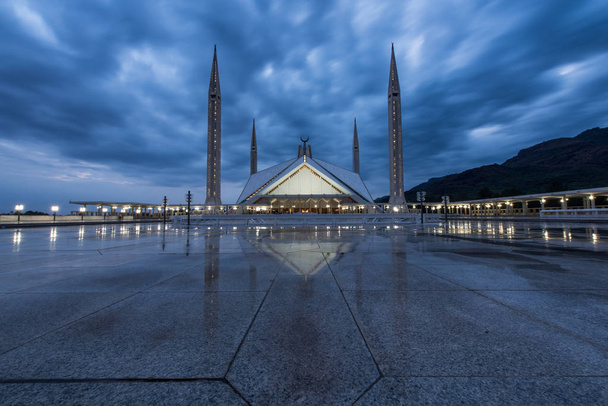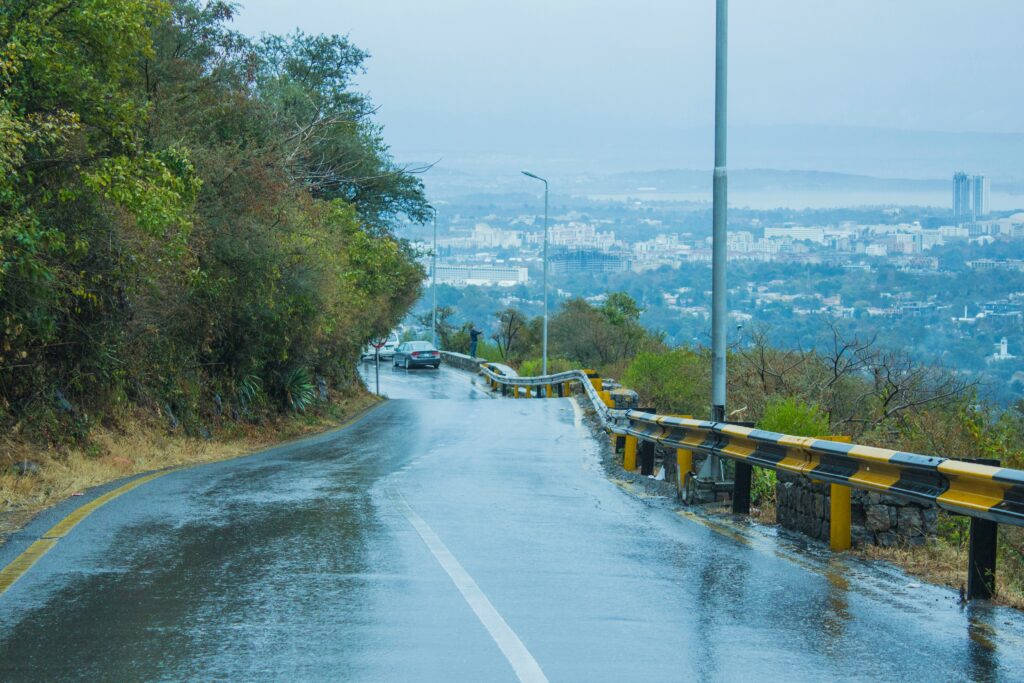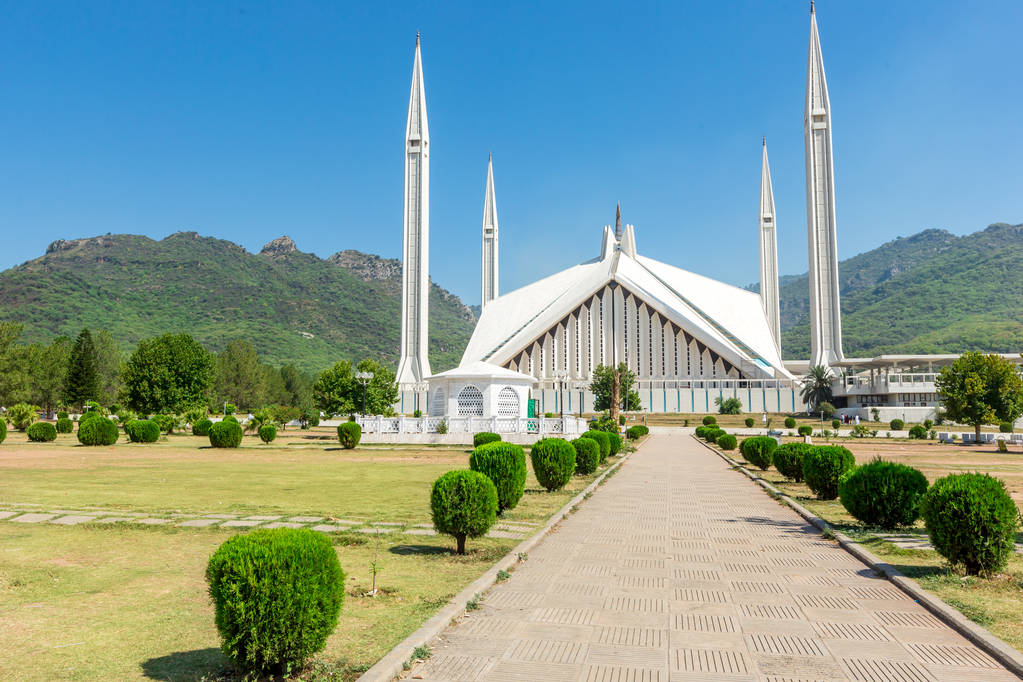Nestled against the backdrop of the picturesque Margalla Hills, Islamabad is not just the capital city of Pakistan; it is also a symbol of modernity, tranquility, and culture. Established in the 1960s to replace Karachi as the capital, this meticulously planned city reflects a blend of contemporary architecture, green spaces, and a commitment to maintaining its natural beauty. From its stunning landscapes to its vibrant cultural scene, Islamabad stands out as one of the most fascinating cities in South Asia.
Historical Background
Islamabad’s transformation from a small town to a bustling metropolis began in the 1960s when it was designated the capital of Pakistan by then-President Ayub Khan. The city’s design was carried out by Constantine Doxiadis, a Greek architect who envisioned Islamabad as a city that harmonizes with its natural surroundings. The idea was to create an urban center that would represent a new identity for Pakistan, moving away from the colonial influences of the past.

Construction of the city commenced in 1961, and it was officially inaugurated in 1967. Since then, Islamabad has grown rapidly, attracting individuals from diverse backgrounds, creating a dynamic tapestry of cultures and traditions.
Geography and Climate
Islamabad is strategically located in the northern region of Pakistan, bordering the province of Punjab. The city is located at the fringes of the Margalla Hills National Park, which provides a stunning natural environment and serves as a recreational area for residents and visitors. The hills are home to diverse flora and fauna, offering opportunities for hiking, birdwatching, and enjoying the great outdoors.

The climate in Islamabad is characterized by four distinct seasons: a hot summer, a mild winter, and moderate spring and autumn. The month of July can see temperatures soar above 40°C (104°F), while winters can drop to around 0°C (32°F). The best time to visit is during the spring (March to May) and autumn (September to November) when the weather is pleasant, and the landscapes are vibrant.
Cultural Heritage
Islamabad is a melting pot of cultures, reflecting the diverse ethnicities and languages found throughout Pakistan. While Urdu is the national language, English is widely spoken, particularly in business and government sectors. The city hosts a range of ethnic communities, including Punjabis, Sindhis, Pashtuns, and Muhajirs, each contributing to the cultural life of the city.
Art and culture flourish in Islamabad, with numerous galleries, theaters, and museums. The Pakistan National Council of the Arts (PNCA) and Alhamra Arts Council are notable institutions showcasing local talent through music, theater, and visual arts. The cultural diversity of Islamabad is also celebrated through various festivals that promote the rich traditions of different regions.
Islamabad is also home to several significant religious sites. The Faisal Mosque, an architectural masterpiece, is not only a functional mosque but also a cultural symbol of the city. With its unique design and capacity to accommodate thousands of worshippers, it stands as an iconic landmark that attracts visitors from all over the world.
Notable Attractions
Islamabad boasts a wealth of attractions that cater to various interests. Here are some of its highlights:
- Faisal Mosque: As the largest mosque in Pakistan and an important religious site, Faisal Mosque is known for its unique triangular structure and stunning views of the Margalla Hills. Built in 1986, it can accommodate over 100,000 worshippers. The mosque’s combination of modern design and traditional elements makes it a must-visit.
- Daman-e-Koh: This viewpoint offers panoramic views of Islamabad and is a popular destination for both locals and tourists. A beautiful park surrounds it, providing an ideal spot for family outings and picnics while enjoying the serene landscapes.
- Pakistan Monument: Representing the four provinces and the territories of Pakistan, the Pakistan Monument is a national monument that symbolizes unity. The monument is complemented by a museum that narrates the history and heritage of the country.
- Lok Virsa Museum: For those interested in delving into Pakistan’s cultural heritage, the Lok Virsa Museum offers an extensive collection of traditional crafts, textiles, and artifacts that represent the rich diversity of the nation. The museum conducts workshops and cultural programs to promote awareness of indigenous traditions.
- Rawal Lake: Spread over an area of 1,400 acres, Rawal Lake is an artificial reservoir that serves as a source of drinking water for Islamabad. The surrounding park is a popular recreational area, ideal for walking, jogging, and boating. Families often flock to the area for picnics and leisure activities.
- Margalla Hills National Park: A haven for nature lovers and adventure enthusiasts, this national park is home to diverse wildlife and hiking trails. Visitors can explore various trekking routes, including the popular trails leading to Pir Sohawa, which offers stunning views of the Margalla Hills and the city below.
Economic Landscape
As the political and administrative capital of Pakistan, Islamabad plays a crucial role in the country’s economy. The city is home to numerous government offices, ministries, foreign embassies, and international organizations. The presence of these institutions contributes significantly to the local economy, providing employment opportunities for residents.
The private sector is also thriving, with a growing number of businesses, including IT companies, retail, and hospitality services. The Centaurus Mall is a commercial hub that brings together shopping, dining, and entertainment, catering to the needs of Islamabad’s residents and visitors.
This is also a center for education, housing several prestigious universities such as the Quaid-i-Azam University and National University of Sciences and Technology (NUST). The academic institutions contribute to research and development, fostering innovation and skill development in various fields.
Contemporary Challenges
Despite its many attractions, Islamabad faces challenges common to rapidly growing urban centers. Issues such as rapid population growth, traffic congestion, inadequate public transport, and pollution are becoming increasingly prominent. Efforts are being made by the local government to improve infrastructure and public services, but these issues require ongoing attention and investment.
More:Read about on Badakhshan Province: Afghanistan’s Hidden Gem
Housing affordability is another pressing concern, with an increasing demand for residential spaces leading to soaring property prices. There is a need for sustainable urban planning to accommodate the city’s growth while preserving its green spaces and aesthetic appeal.
The Future of Islamabad
The future of Islamabad holds great promise as the city continues to evolve. Emphasis on sustainable development, smart city initiatives, and eco-friendly practices can help address many of the challenges it currently faces. Investments in public transport systems, green spaces, and urban infrastructure will be essential to improving residents’ quality of life.
More: Wanted to download Odisha Magazines, visit here
Additionally, promoting tourism can further enhance Islamabad’s appeal, showcasing its rich cultural heritage and natural beauty to visitors from around the world. The city has already made strides in establishing itself as a cultural hub, hosting events like film festivals, art exhibitions, and music concerts.
Conclusion
Islamabad, with its stunning landscapes, rich cultural heritage, and modern infrastructure, is a shining example of growth and development in Pakistan. As the city continues to navigate its challenges, its resilience and the indomitable spirit of its people are sure to pave the way for a brighter future.

Whether you are drawn by its historical significance, natural beauty, or vibrant culture, Islamabad promises an unforgettable experience for all who visit.
FAQ For Islamabad: The Modern Capital of Pakistan
Where is Islamabad located?
Islamabad is situated in the northern part of Pakistan, nestled at the foothills of the Margalla Hills. It serves as the capital city of Pakistan and is part of the Islamabad Capital Territory.
What is the best time to visit Islamabad?
The ideal time to visit Islamabad is during spring (March to May) and autumn (September to November) when the weather is pleasantly mild and suitable for outdoor activities.
What are the main attractions in Islamabad?
Key attractions include Faisal Mosque, Daman-e-Koh, Pakistan Monument, Lok Virsa Museum, and the stunning Margalla Hills National Park. The city is known for its modern architecture and green spaces.
Is Islamabad safe for tourists?
Islamabad is generally considered safe for tourists, but it’s recommended to stay updated on local conditions and follow travel advisories from your government for the latest information.

